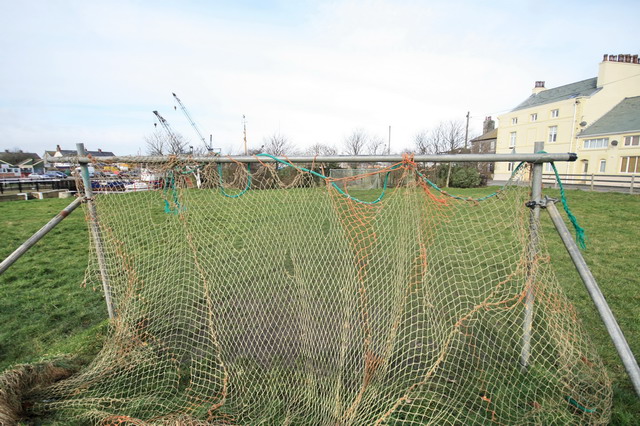In the ever-evolving world of agriculture, selecting the appropriate agricultural net can significantly impact crop yield, pest management, and overall farm productivity. This guide aims to provide a detailed overview of the different types of agricultural nets available, their applications, and how to choose the best option for your specific needs.
Understanding Agricultural Nets
Agricultural nets are specialized mesh fabrics designed for various farming applications. They can serve multiple purposes, including crop protection, shading, and support structures. Understanding the types of agricultural nets available is the first step in making an informed decision.
Types of Agricultural Nets
- Shade Nets
Shade nets are primarily used to protect crops from excessive sunlight, reducing heat stress and maintaining optimal growth conditions. They are available in various shading percentages (30% to 90%), allowing farmers to select a level of shading that best suits their crops. - Insect Nets
Insect nets are designed to keep pests away from crops while allowing sunlight, air, and water to penetrate. These nets are typically made from lightweight materials that provide an effective barrier against insects without obstructing growth. - Bird Nets
Bird nets are used to protect fruit and vegetable crops from birds that can cause significant damage. These nets are often made from durable polyethylene or polypropylene and are designed to withstand various weather conditions. - Frost Protection Nets
Frost protection nets help to insulate crops against cold temperatures. By trapping heat near the ground, these nets can protect delicate plants from frost damage during critical growing periods. - Support Nets
Support nets are essential for vining plants such as tomatoes and cucumbers. They provide structural support, allowing the plants to grow vertically and maximizing space and light exposure.
Key Factors to Consider When Choosing Agricultural Nets
When selecting the right agricultural net, several key factors must be taken into account:
- Crop Type
Different crops have varying requirements for protection, support, and shading. For example, leafy greens may benefit from shade nets, while berry plants may require bird nets to prevent damage. - Climate and Weather Conditions
Understanding your local climate is crucial. In hot, sunny areas, shade nets may be necessary, while cooler regions might prioritize frost protection. Additionally, consider wind and rain exposure, as these factors can affect net durability and effectiveness. - Pest Pressure
Assess the level of pest pressure in your area. High pest populations may necessitate the use of insect nets, while areas with minimal pest issues might not require such measures. - Durability and Material
The material used in agricultural nets varies, with options ranging from lightweight mesh to heavy-duty polyethylene. Consider the net’s lifespan, UV resistance, and ability to withstand harsh weather conditions. - Installation and Maintenance
Some nets are easier to install and maintain than others. Consider whether you need a permanent structure or a temporary solution, as this will affect your choice of net.
Statistics on Agricultural Net Usage
Understanding the impact of agricultural nets on farming practices can provide insights into their value:
- Increased Yield: Research indicates that farms using insect nets can see yield increases of up to 30% due to reduced pest damage (Source: Journal of Agricultural Science).
- Pest Management: Studies show that 70% of farmers using insect nets report significant reductions in pest populations (Source: Pest Management Science).
- Water Efficiency: Shade nets can reduce water evaporation by up to 50%, leading to more efficient irrigation practices (Source: Agricultural Water Management).
- Economic Benefits: According to a report by the Food and Agriculture Organization (FAO), farmers who invest in quality agricultural nets can see a return on investment (ROI) of 200% within the first two years due to improved crop yields and reduced losses.
Best Practices for Agricultural Net Use
To maximize the effectiveness of agricultural nets, consider the following best practices:
- Proper Installation
Ensure that nets are installed securely and at the appropriate height to prevent wind damage and sagging. This is especially important for bird nets and insect nets. - Regular Maintenance
Regularly check the condition of your nets. Look for holes, tears, or signs of wear that could compromise their effectiveness. Timely repairs can prolong the lifespan of the nets. - Seasonal Adjustments
Adjust the use of nets according to seasonal changes. For example, remove shade nets during cooler months or reposition insect nets as crops mature. - Monitor Crop Health
Keep an eye on crop health to determine if the net is providing adequate protection or support. Adjustments may be necessary based on growth patterns and pest activity.
Case Studies: Successful Implementation of Agricultural Nets
Case Study 1: Organic Tomato Farm
An organic tomato farm in California implemented insect nets to combat a severe aphid infestation. By using nets, the farm saw a 25% increase in yield and reduced pesticide usage, aligning with its organic practices.
Case Study 2: Vineyard Protection
A vineyard in France utilized bird nets to protect its grapes during the ripening season. This strategy resulted in a 15% increase in grape quality and a significant decrease in losses due to bird damage.
Conclusion
Choosing the right agricultural net is crucial for optimizing crop production, enhancing pest management, and ensuring sustainable farming practices. By considering factors such as crop type, climate, and pest pressure, farmers can make informed decisions that lead to increased yields and reduced losses.
For more detailed information on specific agricultural nets and their applications, consider visiting AgriNet for expert guidance and product recommendations.
Choosing the right agricultural net can transform your farming practices. From insect nets that boost yields by 30% to shade nets that reduce water evaporation by 50%, the right choice is vital. Explore our guide to understand types, benefits, and best practices for agricultural nets.

